CLL Systems Sdn Bhd is a Malaysia Ministry of Finance (MOF) registered company.


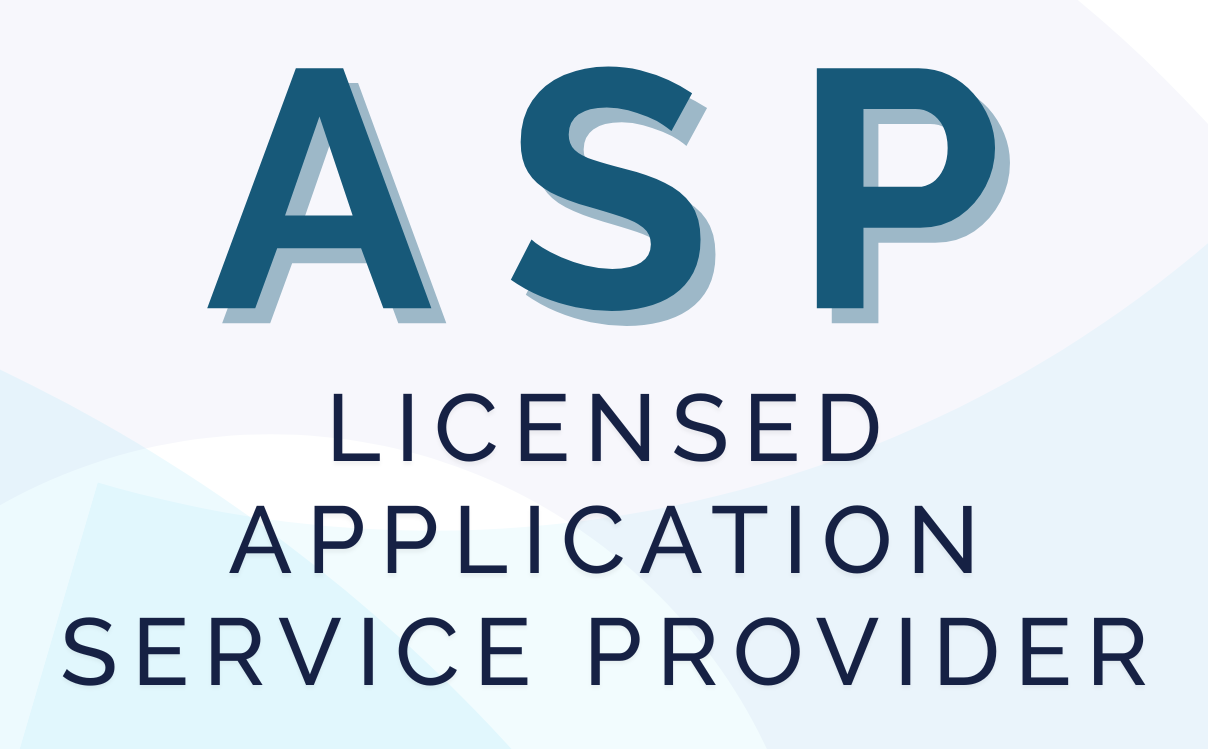
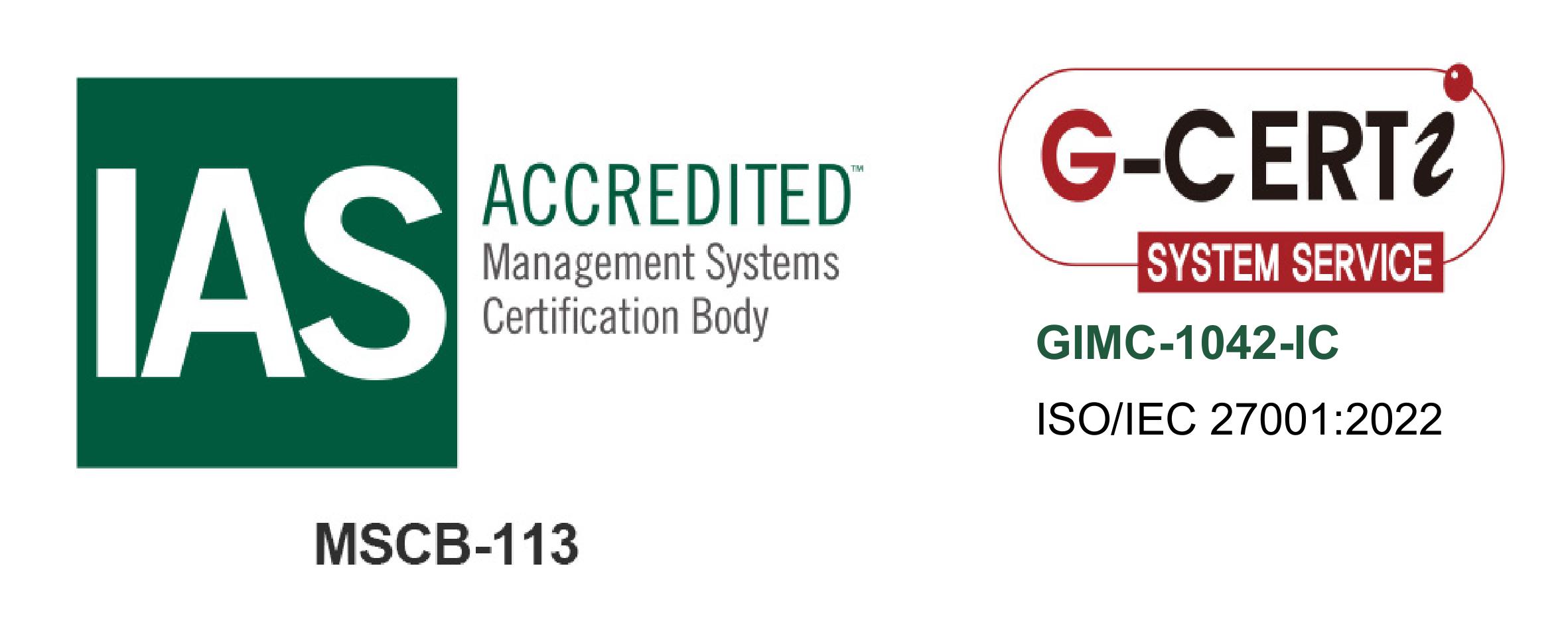
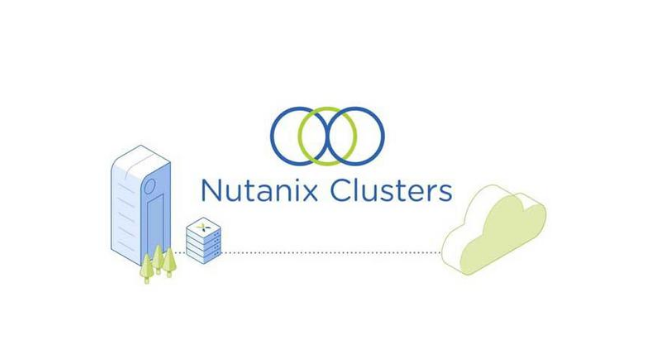
Nutanix Clusters is a state-of-the-art cloud offering that enables seamless hybrid cloud deployments that are natively integrated into public clouds. You get direct, low latency access to the cloud-native services with predictable Nutanix resilience, efficiency, and performance. The solution has been purpose-built so you can achieve agility in extending your data center capacity using public cloud elasticity and maximize operational efficiency by leveraging the same skill sets and tools across private and public clouds.

Nutanix Cloud Platform for the Hybrid and Multicloud Era
Nutanix Clusters is designed to offer consistent experience between the on-premises and public cloud environments. You can move applications across these environments without the risk, cost or time taken to refactor applications, to truly achieve freedom from any lock-in to the underlying cloud.

Nutanix Clusters Features and Benefits
Nutanix Clusters runs on AWS as the first supported public cloud provider, with others to come very soon. It enables you to run the Nutanix HCI stack directly on AWS EC2 bare metal instances using your existing VPCs. Prism Central can be used to centrally manage your on-premises as well as AWS deployments, helping you unify private and public cloud infrastructure operations. You can provision Nutanix Clusters on any of the globally available AWS regions with a choice of general purpose, storage intensive or compute intensive baremetal instance configurations, as required by your workloads.
Not only does Nutanix Clusters help you decouple applications from the underlying platform, it also helps you decouple your business investments from the underlying platform. You have the freedom to use your portable Nutanix software licenses to the cloud of your choice. Additionally, you can also choose from pay-as-you-go (PAYG) or commitment-based subscription plans for flexible consumption. You can keep your existing investments with the public cloud providers and use your credits, discounts and the choice of payment models for the bare metal instances and cloud resources consumed.
Nutanix Clusters console orchestrates the provisioning of clusters in your AWS accounts. This global service provides deployment automation, cluster lifecycle management, IAM, RBAC, security, scaling, metering, logging and other functions related to cloud distribution. It continuously monitors the health of the bare metal instances in the cluster and executes the required remediation actions if any of the instances get into a degraded state. The day-to-day cluster administration, management, monitoring and workload operations can be performed via Prism Central.
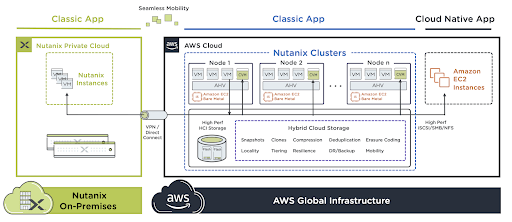
Nutanix Clusters Storage Architecture
AHV hypervisor exposes the local NVMe storage to controller VMs (CVMs) to manage storage across different bare metal instances. The CVMs cluster together and provide a single storage fabric across all nodes with all the enterprise storage capabilities that enterprise apps need. The storage fabric from a Nutanix Cluster on AWS can be connected to a Nutanix Cluster running on-premises using Nutanix AOS DR, backup and replication capabilities, allowing seamless mobility of stateful applications from on-premises to AWS and back. While AHV is installed in the Nutanix Clusters on AWS, you can have any supported hypervisor in your on-premises Nutanix Clusters.
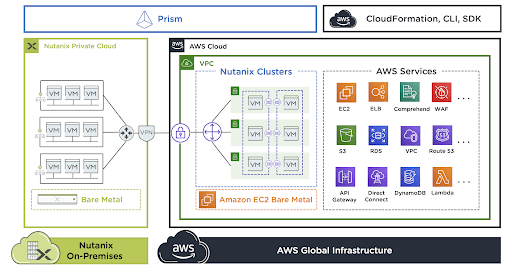
Nutanix Clusters Networking Architecture
Nutanix Clusters natively packages in all the required networking integration so that you do not have to manage any network overlays. There are no management VMs needed which reduces complexity and costs. Nutanix Clusters installs AHV on the AWS bare metal instances with user VMs that are assigned IP addresses provided by native AWS network infrastructure. When user VMs talk to each other within two Nutanix Clusters on AWS or with a Nutanix Cluster and cloud-native EC2 VMs, they can talk natively to cloud services without going through any gateways or any packet translations, resulting in high performance and low latency networking.
AHV has been modified to achieve deep integration with AWS networking. AHV runs an efficient embedded distributed network controller that integrates user VM networking with AWS networking. The network controller does not create an overlay network and the AHV embedded network controller simply forwards the packets from the host to the right VM on the host or wherever it might have migrated to. IP address management is integrated with AWS VPC, hence all user VM IPs are allocated from the AWS subnets in the existing VPCs. As a result of this architecture, there is no need for network controller VMs, network edge gateways, or any other management VMs and Nutanix Clusters supports near-native networking performance between AHV user VMs and EC2 instances.
Nutanix Clusters supports 4 AWS EC2 bare metal instance types to allow for a variety of different use cases and provide global coverage across 20+ AWS regions.
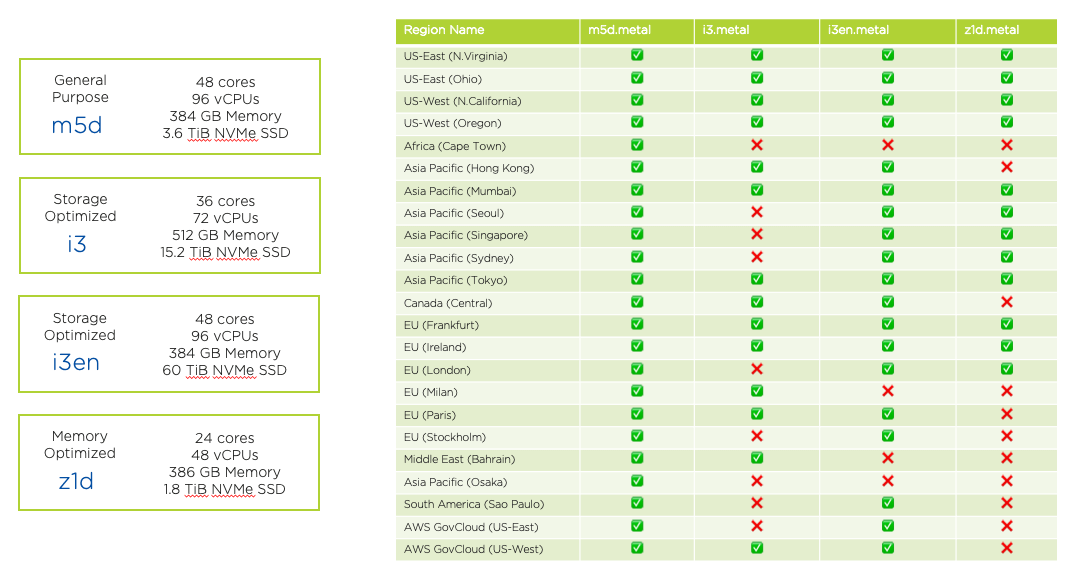
Global availability with Nutanix Clusters
Nutanix Clusters provides the fastest path to a hybrid and multicloud and is now available for you!
To learn more about Nutanix Clusters on AWS, its use cases, or to Test Drive it, contact us.
CLL Systems Sdn Bhd is a Malaysia Ministry of Finance (MOF) registered company.




© 2016-2025 CLL Systems Sdn Bhd. All Rights Reserved Privacy Policy